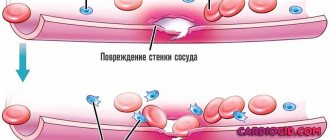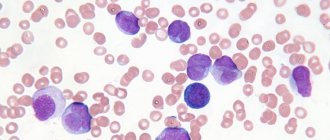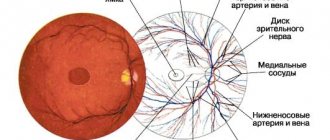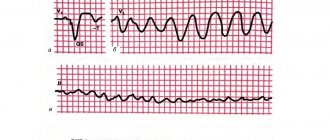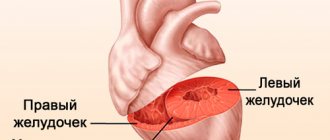Hemophilia is a severe hereditary disease characterized by blood clotting disorders. The name of the disease comes from the Greek words “blood” and “love”. Its main symptom is frequent bleeding, which is very difficult to stop. The hemophilia gene is associated (“linked”) with the sex chromosomes, with which it is transmitted. History has known cases of hemophilia in men of the royal family; the most famous patient is the son of Tsar Nicholas II and Tsarina Alexandra, Tsarevich Alexei.
Definition and possible causes
If you turn to reputable medical sources, it turns out that hemophilia is an extremely rare hereditary disease associated with a disorder of blood clotting (coagulation) . What is its danger and deceit, you ask? In the most banal cuts, abrasions, visits to the dentist and any medical procedures in general. The fact is that if normally blood clots in 3-5 minutes, then with hemophilia it takes much longer, which in the most severe cases can lead to death. In other words, such patients are forced to literally walk on the edge of a knife all their lives, and the procedure of tooth extraction turns into almost a feat for them.
Even something as small as a lost tooth can have the most serious consequences.
At the same time, the popular opinion that hemophilia is transmitted exclusively by inheritance is not an absolute truth. The fact is that in approximately 20% of cases it is not possible to detect any family connections, and the disease, although of a genetic nature, is explained by a random mutation .
The mechanism that is responsible for the transmission of hemophilia is quite complex and depends on who is the carrier of the mutant gene - a man or a woman.
- The combination of “healthy father/carrier mother” gives a 25% chance that a boy born in such a marriage will be sick. The chance of having a carrier daughter is the same, and the remaining 50% is equally distributed between the birth of a healthy child, regardless of gender.
Healthy carrier father/mother
- With a sick father and a healthy mother, boys will be guaranteed to be healthy, and girls, on the contrary, will become carriers.
Sick father / healthy mother
- If the father suffers from hemophilia and the mother is a carrier of the mutant gene, the situation is as follows. In a quarter of cases, a healthy son will be born, in 50% - a sick child (boy or girl), in 25% - a daughter, who, being healthy, will remain a carrier for life.
Ill father/mother is carrier
A conversation about factors that can cause a mutation is beyond the scope of this material, and if there are no cases of hemophilia in your family (at least 2 generations back), then with some reservations you can consider yourself safe. Why with some? The fact is that the remaining 20% of cases of hemophilia occur due to spontaneous mutations, which science is not yet able to explain .
What it is?
Hemophilia is a hereditary blood disorder that is caused by a congenital absence or reduction of blood clotting factors. The disease is characterized by a blood clotting disorder and manifests itself in frequent hemorrhages in the joints, muscles and internal organs.
This disease occurs with a frequency of 1 case per 50,000 newborns, with hemophilia A diagnosed more often: 1 case of the disease per 10,000 people, and hemophilia B less often: 1: 30,000-50,000 male residents. Hemophilia is inherited through a recessive trait associated with the X chromosome.
In 70% of cases, hemophilia is characterized by a severe course, steadily progresses and leads to early disability of the patient. The most famous hemophiliac in Russia is Tsarevich Alexei, the son of Alexandra Feodorovna and Tsar Nicholas II. As you know, the disease was inherited by the family of the Russian emperor from his wife’s grandmother, Queen Victoria. Using the example of this family, the transmission of the disease along the genealogical line is often studied.
Subtleties of classification
To understand it, it is worth describing in at least a few words the mechanism of blood clotting in the most ordinary person. It must (an important note - it is “must”, not “can”!) that should involve 12 proteins, designated by numbers from I to XII. If the level of some of them is critically low (often down to zero), blood clotting is impaired . Therefore, until recently, reputable sources pointed to three main types of disease:
- Hemophilia A: lack of antihemophilic globulin (factor VIII). This is what is commonly called classic.
- Hemophilia B: lack of plasma thromboplastin (factor IX). An alternative name is Christmas disease.
- Hemophilia C: plasma thromboplastin precursor (factor XI).
The modern classification is somewhat different from the canonical one: the third type of hemophilia is excluded from it . The reason for this is that its main symptoms, as well as its mode of inheritance, are completely different. Therefore, hemophilia C is now considered a rare blood clotting pathology - coagulopathy.
If we start not from the causes of the disease, but from the severity of clinical manifestations and the time of their appearance, the picture turns out to be as follows:
- Light form. The disease manifests itself as a result of serious injuries or surgical operations, and the patient’s quality of life is close to 100%.
- Medium shape. The whole complex of symptoms, leading to extensive hematomas and bleeding, occurs in childhood or adolescence.
- Severe form. The diagnosis is made in the first days of life, making the prognosis very unfavorable. It is practically impossible to make any adjustments.
How does the disease occur?
Hemophilia genes are recessive. Recessive genes are conditionally “weak” genes, and in most cases of genetic diseases, clinical manifestations of hemophilia are possible only if both the child’s father and mother have these recessive genes in their genotype, and they are found in the child’s genotype.
But in the case of hemophilia, the situation is somewhat different. Hemophilia is an X-linked disease.
The gene that causes the development of hemophilia is attached to the X chromosome in both the mother and the father. The father has the sex chromosome genotype XY, the mother has the XX genotype.
Thus, hemophilia is inherited on the maternal line, since the boy receives the Y chromosome from his father, and the X chromosome from his mother. In a girl, the presence of one healthy X chromosome covers the defects of the second. The boy has a single X chromosome and there is nothing to “cover” it in case of a defect.
Symptoms and clinical manifestations
In the first few days and months of life:
- Hemorrhage under the membrane that surrounds the outside of the skull bone (cephalohematoma).
- Severe bleeding from the umbilical cord, which cannot be stopped for a long time.
- Subcutaneous or intradermal hematomas.
- The appearance of the first teeth (most often around 6-8 months) is accompanied by significant bleeding.
To be fair, it should be noted that during this period, mother's milk maintains a normal level of blood clotting, so such symptoms, if there is no special reason to suspect a problem, may go unnoticed.
Best protection against hemophilia in infancy
After a year or two, when the baby begins to actively explore the world, the external manifestations of hemophilia begin to increase:
- Painful hematomas appear even after minor falls and abrasions. They resolve poorly and respond poorly to specific therapy.
- Inevitable minor injuries or minor medical procedures lead to prolonged and heavy bleeding.
- Periodic nosebleeds without clearly visible causes.
- Bleeding gums.
- Malfunctions of the gastrointestinal tract and digestive system.
- Cold symptoms (fever, chills), independent of the time of year or external factors.
Symptoms detected in a medical facility:
- The presence of blood components in stool and urine.
- Hemorrhages begin in large joints: knee, hip and shoulder. Most often they are accompanied by pain, fever, swelling and decreased mobility. It is important to understand that the described effects do not appear immediately, but after 8-12 hours, since at the time of injury platelets are activated.
Pathogenesis of hemophilia
It means the congenital absence of certain factors that lead to blood clotting disorders. Doctors call this slow process the pathogenesis of hemophilia, and it entails bleeding and hemorrhage, which is dangerous to health. For example, if blood enters the brain, then the person may die and even emergency assistance will not help.
In most patients, the first warning signs of the disease are bleeding, which occurs even with the mildest injuries. For example, when a child is teething. Usually the first signs appear in childhood. After all, hemophilia is inherited.
In an adult, symptoms of hemophilia can be noticed after tooth extraction or at the site of a minor injury, when bruises appear in the form of hematomas. Hemorrhages can occur anywhere in the human body, and often lead to excruciating pain.
Principles of effective diagnosis
- Collecting anamnesis to determine the presence of hemophilia in relatives.
- An objective analysis of the patient’s complaints or (if the baby is still too small) his parents.
- In-depth general examination (presence of abrasions, cuts and bruises; condition of joints and gastrointestinal tract organs).
- If the preliminary diagnosis of hemophilia is confirmed, laboratory determination of the type of hemophilia.
- Specialized study of blood parameters for coagulation.
- Determination of the level of activity of clotting factors VII, IX and XI.
- Consultation with specialized specialists: surgeon, hematologist, traumatologist, orthopedist, gastroenterologist, geneticist.
Accurate diagnosis of hemophilia requires highly accurate laboratory equipment
A qualified differential diagnosis is of great importance, since thrombocytopenic purpura, von Willebrand's disease or thrombosthenia (Glanzmann's disease) can be disguised as hemophilia.
Treatment
It is with regret that we have to admit that at the current level of development of medicine, there is no talk of a complete cure for hemophilia, regardless of its type . But at the same time – an important note – the popular opinion about the fatality of the disease is unfounded. Doctors have already learned how to maintain a normal standard of living for a small patient, which is why hemophilia in developed countries is no longer a sentence, but a diagnosis. What can doctors do to stabilize the situation?
- Administration of missing or missing blood factors. They are most often produced by yeasts with an implanted human gene.
- Injections of cryoprecipitate - a special “cocktail” based on the components of natural coagulation factors.
Preparation of cryoprecipitate
Also, depending on the situation, auxiliary measures are used:
- Specific methods to stop bleeding.
- Complete immobilization of a limb in case of injury or muscle hematomas.
- The most accurate removal of loose baby teeth.
- Any surgical intervention is carried out under the supervision of a hematologist with the obligatory introduction of the missing coagulation factors.
- The use of special bark-stopping drugs in case of cuts, abrasions and injuries.
- Plasmapheresis sessions, during which 400-500 ml of plasma are removed from the bloodstream, which, after repeated purification, are introduced back into the body.
- Puncture of the damaged joint with blood extraction and injection of anti-inflammatory drugs into it. The procedure is quite painful, so it is usually performed under local anesthesia.
- Consultations with a psychologist who will help parents with their child’s social adaptation
Traditional medicine recipes
Despite the fact that people have been using various tinctures and herbal preparations to treat hemophilia since ancient times, you must clearly understand the following: this disease requires mandatory medical care and cannot be treated in the acute stage with any herbal preparations. On the other hand, some plants have an obvious healing effect and are therefore suitable as maintenance therapy . Let us clarify once again: strictly after consultation with a doctor!
- Women's milk. It is believed that it significantly speeds up the healing of wounds, for which you need to apply gauze soaked in it to the problem area. Let us be especially clear: this method of treatment will be effective if the baby is more than 2 weeks old.
- Infusion of elecampane roots. 2 tsp. pour the crushed and purified raw materials with cold boiled water (400-500 ml) and let it brew for 8-10 hours. After this, the infusion should be filtered. Dosage regimen: 50 ml 3-4 times a day 30 minutes before meals.
Elecampane is a good support agent
- Peppermint decoction. 2 tbsp. l. Pour boiling water (1 cup) over the raw material and place in a water bath for 15-20 minutes. Cool and leave for 45 minutes at room temperature. It is recommended to take 60-70 ml three times a day.
Peppermint may speed up wound healing and moderate bleeding
Possible consequences and complications
- High risk of death even in a specialized hospital.
- Immobilization of joints due to hemarthrosis.
- Persistent and irreversible disability.
- Numerous problems with the musculoskeletal system.
- Upper respiratory tract stenosis and asphyxia.
- Pathologies in the functioning of vital organs due to their compression.
- Amyloidosis.
- Decreased immunity, which leads to an increased risk of infection.
- Pain syndrome that develops with ossification of soft tissues.
- Clearly expressed problems with social adaptation.
Hemarthrosis
Hemarthrosis is hemorrhage in the joints, which is more often observed in children with hemophilia from 1 to 8 years old. Large joints are predominantly affected, especially the knees and elbows, less commonly the hip and shoulder.
- Acute hemarthrosis is a newly emerging condition with a turbulent clinical picture.
- Recurrent hemarthrosis is frequent, repeated hemorrhages in the same joint.
The frequency and location of hemorrhages in the joints depends on the severity of hemophilia and the type of physical activity:
- When running and jumping quickly, symmetrical hematomas can form in the knee joints.
- If you fall on any side, hemarthrosis occurs on the corresponding side.
- When loading the upper limbs (pull-ups, hanging, push-ups and other types of activity associated with the work of the arms and shoulders), hemorrhages in the elbow and shoulder joints and small joints of the hands are common. The affected joint increases in volume, there is swelling, pain when palpating and moving.
Hemarthrosis without treatment, especially recurrent ones, can be complicated by suppuration of the contents of the joint capsule, as well as organization (degeneration into scar tissue) and the formation of ankylosis (stiff, immobile joint).
Prevention
Science does not know any effective methods for preventing hemophilia, therefore all recommendations for organizing the regimen of sick children usually come down to listing what they should not do: run, jump, play sports, go to physical education and subject the body to even minor physical activity. How fulfilling such a “life” can be called is an open question.
But what you absolutely should not forget about is a special passport, which should contain the following information: blood type, Rh factor and type of disease. Regular visits to a pediatrician, dentist, orthopedist and hematologist are also strictly necessary. If necessary, a course of treatment in a specialized hemophilia center.
The child should always have this document.
The verification of couples getting married deserves special mention. We do not consider ourselves entitled to give advice like “refuse to get married if the bride or groom is a carrier of defective genes. And even more so, we do not call for divorce. But it is possible and necessary to know about the potential presence of a problem in order to, as a last resort, be able to correct the sex of the unborn child.
Hematuria
Hematuria is the discharge of blood in the urine, a serious symptom indicating impaired renal function or damage to the ureter, bladder and urethra (urethra). If there is a tendency to stone formation, then it is necessary to regularly see a urologist in order to prevent the formation of stones and trauma to the mucous membranes.
Hematuria is more often observed in children over 5 years of age. A provoking factor may also be trauma to the lumbar region; bruises that would not cause harm to a healthy child can become fatal.
Forecast
Conditionally unfavorable, although, let us remind you once again, hemophilia does not belong to the category of hopeless . With a mild form of the disease, the duration and quality of life are practically no different from those for healthy people. With moderate and severe forms, the situation is sadder, since stopping massive internal bleeding is often very difficult. Moreover, due to frequent transfusions, the risk of transmitting HIV, hepatitis and herpes increases many times over. And the immunosuppressants used in this case significantly reduce the body’s resistance.
Hemophilia is a difficult diagnosis. It will require maximum dedication, perseverance and confidence from the parents of a sick child that everything will be fine. Today, this disease is incurable, but with adequate diagnosis, organization of the child’s life and compliance with absolutely all recommendations, the likelihood of death can be significantly reduced. And the latest scientific developments inspire cautious optimism among doctors.
- Author: Valentin Okonevsky
Rate this article:
- 5
- 4
- 3
- 2
- 1
(1 vote, average: 1 out of 5)
Share with your friends!
Living with hemophilia
Living with hemophilia brings many different types of troubles. As already mentioned, the cause of this unpleasant disease is the incoagulability of the blood. According to statistics, the average life expectancy with this disease without treatment is about thirty years. If all treatment recommendations are followed, patients with this disease are no different from a healthy person in terms of life expectancy.
As is known, with hemophilia, the risk of human death increases, because hemorrhage can have a different nature of its manifestation. That is why it is necessary to monitor your condition and promptly resort to the necessary help, which is sometimes urgent.
The course of the disease under the supervision of a doctor is controlled using injections. Currently, clotting factor concentrates are used to treat this tricky disease. To determine them, you definitely need a competent specialist who is aware of the state of the disease.

